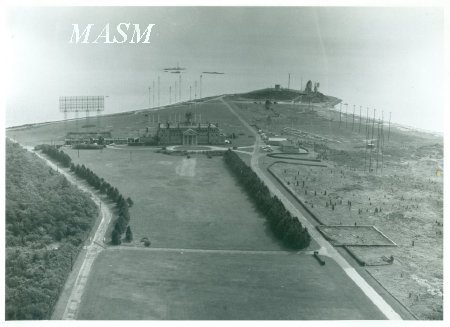Object ID:
2015.43.55
Title:
Image from the 1950s, when Round Hill was Owned by Massachusetts Institute of Technology
VE Exhibit Label 1:
Back in the 1920's MIT's President, Samuel W. Stratton and the Department of Electrical Engineering's new Communications Division were invited to experiment with the radio technology, and the department was initially financed by Green. Professor Edward L. Bowles set out to determine the signal strength and radiation patterns of different antenna arrays in 1926. Round Hill's radio station (which included an early radio telescope, built atop a water tower designed to look like the foundation of a lighthouse) followed Donald B. MacMillan's and Admiral Richard E. Byrd's polar expeditions, tracked the Graf Zeppelin dirigible during its maiden transatlantic flight, and was the sole communication link for areas devastated by the Vermont floods in 1927.
In 1933, Round Hill was the site of Robert J. Van de Graaff's electrical experiments. Van de Graaff had been brought to MIT from Princeton in 1931 to develop a high voltage research facility. He built a 40-foot (12 m) tall Van de Graaff generator in an abandoned airship hangar on Round Hill. The purpose was to provide the energy to accelerate subatomic particles to bombard atomic nuclei. The machine became operational in December 1933. It was capable of operating at 5,000,000 volts. After it became obsolete, the generator was donated in 1956 to the Museum of Science, Boston.
